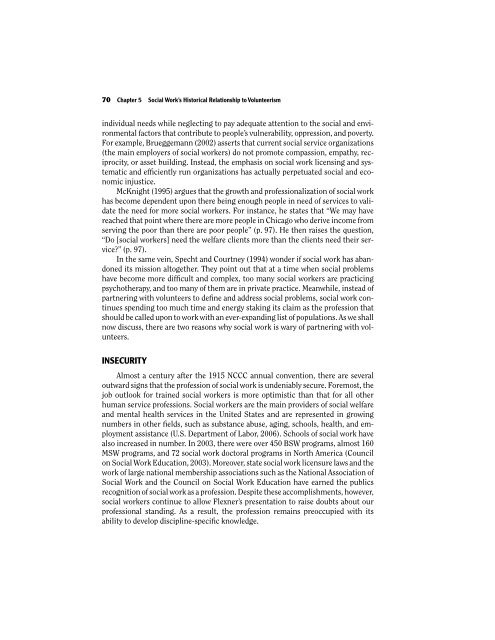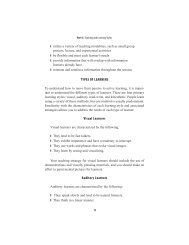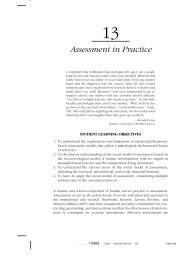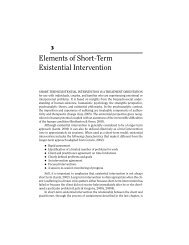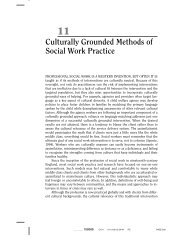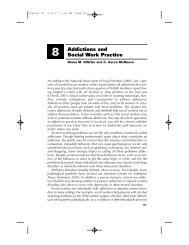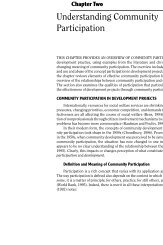Social Work's Historical Relationship to Volunteerism - Lyceum Books
Social Work's Historical Relationship to Volunteerism - Lyceum Books
Social Work's Historical Relationship to Volunteerism - Lyceum Books
Create successful ePaper yourself
Turn your PDF publications into a flip-book with our unique Google optimized e-Paper software.
70 Chapter 5 <strong>Social</strong> Work’s <strong>His<strong>to</strong>rical</strong> <strong>Relationship</strong> <strong>to</strong> <strong>Volunteerism</strong><br />
individual needs while neglecting <strong>to</strong> pay adequate attention <strong>to</strong> the social and environmental<br />
fac<strong>to</strong>rs that contribute <strong>to</strong> people’s vulnerability, oppression, and poverty.<br />
For example, Brueggemann (2002) asserts that current social service organizations<br />
(the main employers of social workers) do not promote compassion, empathy, reciprocity,<br />
or asset building. Instead, the emphasis on social work licensing and systematic<br />
and efficiently run organizations has actually perpetuated social and economic<br />
injustice.<br />
McKnight (1995) argues that the growth and professionalization of social work<br />
has become dependent upon there being enough people in need of services <strong>to</strong> validate<br />
the need for more social workers. For instance, he states that “We may have<br />
reached that point where there are more people in Chicago who derive income from<br />
serving the poor than there are poor people” (p. 97). He then raises the question,<br />
“Do [social workers] need the welfare clients more than the clients need their service?”<br />
(p. 97).<br />
In the same vein, Specht and Courtney (1994) wonder if social work has abandoned<br />
its mission al<strong>to</strong>gether. They point out that at a time when social problems<br />
have become more difficult and complex, <strong>to</strong>o many social workers are practicing<br />
psychotherapy, and <strong>to</strong>o many of them are in private practice. Meanwhile, instead of<br />
partnering with volunteers <strong>to</strong> define and address social problems, social work continues<br />
spending <strong>to</strong>o much time and energy staking its claim as the profession that<br />
should be called upon <strong>to</strong> work with an ever-expanding list of populations. As we shall<br />
now discuss, there are two reasons why social work is wary of partnering with volunteers.<br />
INSECURITY<br />
Almost a century after the 1915 NCCC annual convention, there are several<br />
outward signs that the profession of social work is undeniably secure. Foremost, the<br />
job outlook for trained social workers is more optimistic than that for all other<br />
human service professions. <strong>Social</strong> workers are the main providers of social welfare<br />
and mental health services in the United States and are represented in growing<br />
numbers in other fields, such as substance abuse, aging, schools, health, and employment<br />
assistance (U.S. Department of Labor, 2006). Schools of social work have<br />
also increased in number. In 2003, there were over 450 BSW programs, almost 160<br />
MSW programs, and 72 social work doc<strong>to</strong>ral programs in North America (Council<br />
on <strong>Social</strong> Work Education, 2003). Moreover, state social work licensure laws and the<br />
work of large national membership associations such as the National Association of<br />
<strong>Social</strong> Work and the Council on <strong>Social</strong> Work Education have earned the publics<br />
recognition of social work as a profession. Despite these accomplishments, however,<br />
social workers continue <strong>to</strong> allow Flexner’s presentation <strong>to</strong> raise doubts about our<br />
professional standing. As a result, the profession remains preoccupied with its<br />
ability <strong>to</strong> develop discipline-specific knowledge.


